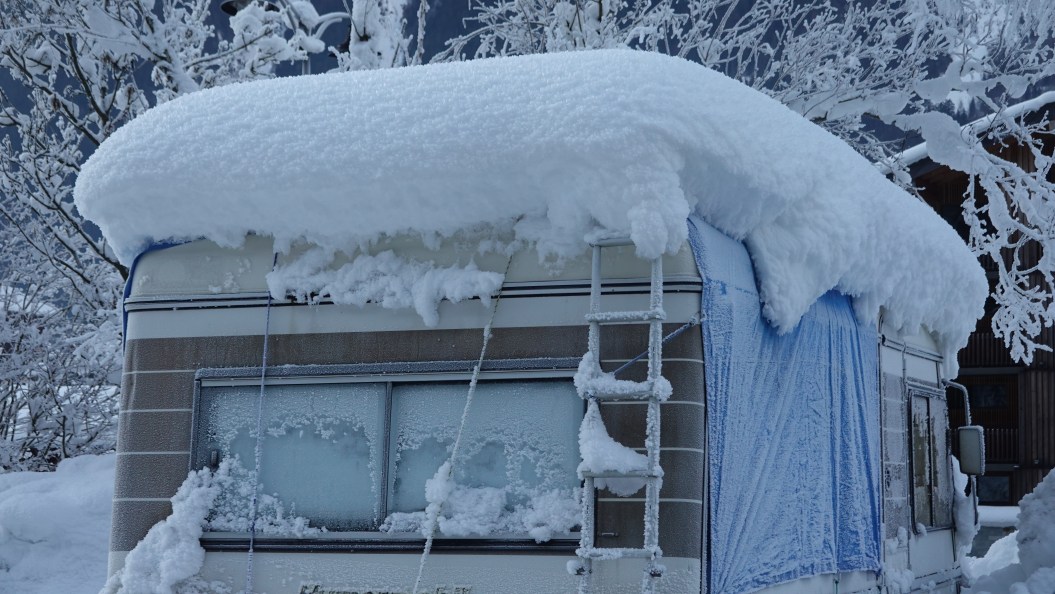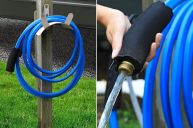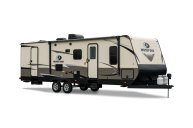While RVing is often considered more of a warm-weather camping activity, that doesn't mean you can't head out during the winter. In fact, cold weather may even be the reason you hit the road: Snowbirds often pack up their RVs and flee to warmer areas during the winter months.
If you plan on taking some winter RV trips in your travel trailer or fifth wheel, you may want to add RV skirting to your camper packing list.
What is RV Skirting?
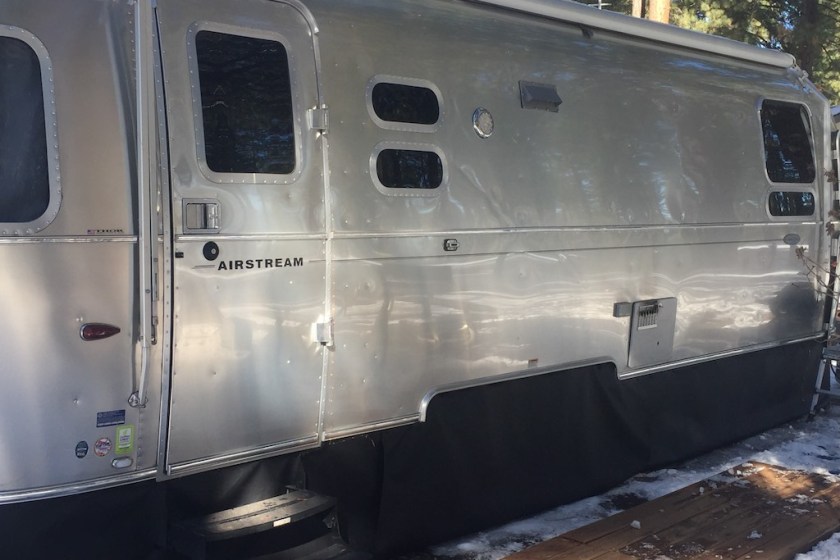
EZ Snap
What is an RV skirt, you may ask? Skirting panels are heavy-duty fabric sheets you attach around the bottom of your camper or fifth wheel when you park it for the night. The fabric insulates the underbelly, providing warmth and protection for your rig, including preventing pipes from freezing over. It can also protect your tires from wear and tear. If you're living the full-time RV life, you can use skirting whenever you're parked at an RV park for an extended period of time, whether winter or summer.
How to Choose an RV Skirt
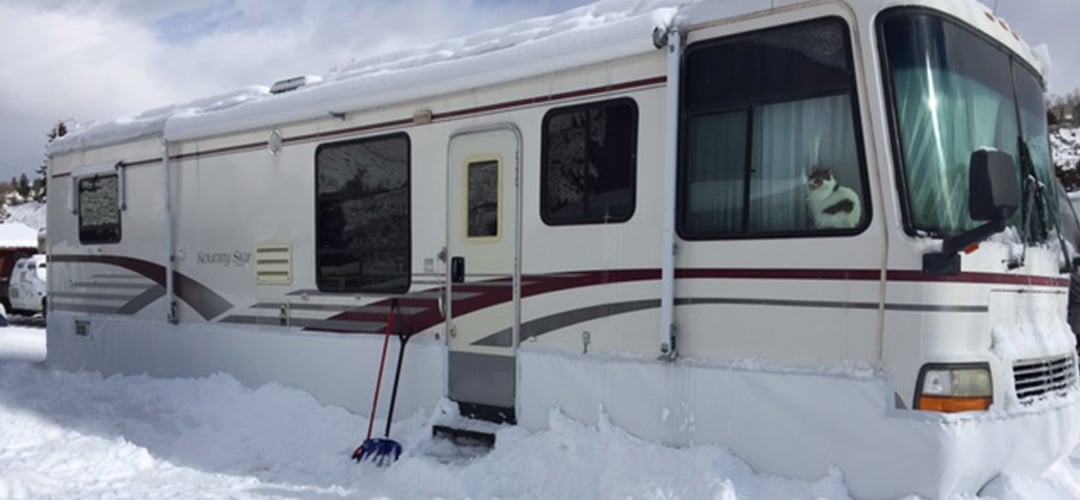
EZ Snap Direct
RV skirts don't automatically come with your rig, so you must choose your own. Much like everything in the RV world, you have many options, including a DIY route. Consider the following when choosing an RV skirting solution for your rig.
RV skirting that you'd take on a trip is most often made from vinyl, canvas, or any tarp fabric, as these materials fold down for on-board stowage when you're driving from place to place.
Skirting can also be made from wood and foam board, which is more of a DIY skirting method that you'd use for long-term parking. The foam and boards need to be cut to the exact shape of your rig and attached either with framing or some other creative solution. Plywood is more of a permanent solution and can be heavy to install. Conversely, foam boards are lightweight, inexpensive, and easier to cut to the shape of your rig, though they won't last as long.
Whichever material you choose, you want something that will hold up to winter weather and harsh environments.
Popular RV Skirting Solutions
EZ Snap. RV skirting from the brand EZ Snap is a popular solution for a reason. The vinyl sheeting is easy to install with a ready-to-go kit, and you can buy skirts that fit your specific rig. Enter your rigs measurements on the brand's site, and the calculator will ID the kit you need. The fabric is rated down to -40 degrees, and you can even select a color that closely matches your RV. Pricing ranges from $140 to over $1,500, depending on the length.
AirSkirts. Many RV owners prefer skirting from the brand AirSkirts. As the name suggests, AirSkirts are inflatable vinyl tubes that affix around the perimeter of an RV. They come in various sizes, so you should be able to find one that works with your rig. AirSkirts are easy to install and equally easy to deflate and remove—an excellent solution for moving from campground to campground during the winter. Kits come with the tubes, an electric air pump, a storage bag, and a patch kit. Plus, the company offers a five-year warranty. However, they're not inexpensive, with prices starting around $1,300.
Custom RV Skirting. Custom skirting companies such as RV Skirting, The Skirting Company, or On-Site RV Skirts can create a skirt especially for your rig. The manufacturer will either come to you to take measurements to design your skirting solution, or you can go to a showroom. If it's too far to travel for installation, they may send your skirt to you to install yourself. Custom skirts are beneficial because they're an exact fit to your specific rig, leaving no gaps where snow and wind can get in. They're generally made with heavy-duty quality that stands the test of time (and weather conditions). Depending on who you go through and the size of your RV, a custom skirt can cost between $1,000 and $3,000.
DIY Skirting. You always have the option to create your RV skirt with tarps, fencing, plywood, foam boards, or a combination of a couple. You can also cut and sew vinyl fabric, attaching it to a foam board for better insulation. You must choose how you want the skirt to attach to your RV. It all depends on your budget, skill level, and how permanent you want the solution.
How to Attach RV Skirting
There are a couple of different attachment methods. The easiest method is using a snap or twist-lock fastener. If you choose a snap, one end of the snap goes on the fabric, and the other end goes on the RV. In some cases, that attachment entails drilling. However, EZ Snap uses an adhesive tape to secure the skirting to the side of the RV.
Some brands use a channel system to slide the panels along the bottom of the RV. The panels are secured with stakes, or the base is weighted.
Are RV Skirts Necessary?
Skirts are essential for RV winter living. If staying in cold-weather areas, it protects your pipes and tanks from freezing when the temperatures drop and adds an extra layer of insulation from below to keep your floors warmer. Depending on your type of RV, you may also need to add electric heaters on either side of the underbelly to assist with heating.
Some four-season RVs and motorhomes use the heat from the onboard propane heater to pipe warm air via ducting into the storage space that hold the water tanks, thereby keeping them from freezing. However, not all recreational vehicles have this option, and some all-season RVs are better than others for overwintering. Purchasing RV skirting is best if you plan on staying in your RV year-round.
When Should RV Skirts Be Used?
RV owners should attach their skirting when temperatures fall below 40 degrees at night, and they're essential when temps dip to 32 degrees or below. However, in very cold temperatures of 15 degrees or lower, you probably need to add a foam board or styrofoam insulation board to your trailer skirting.
